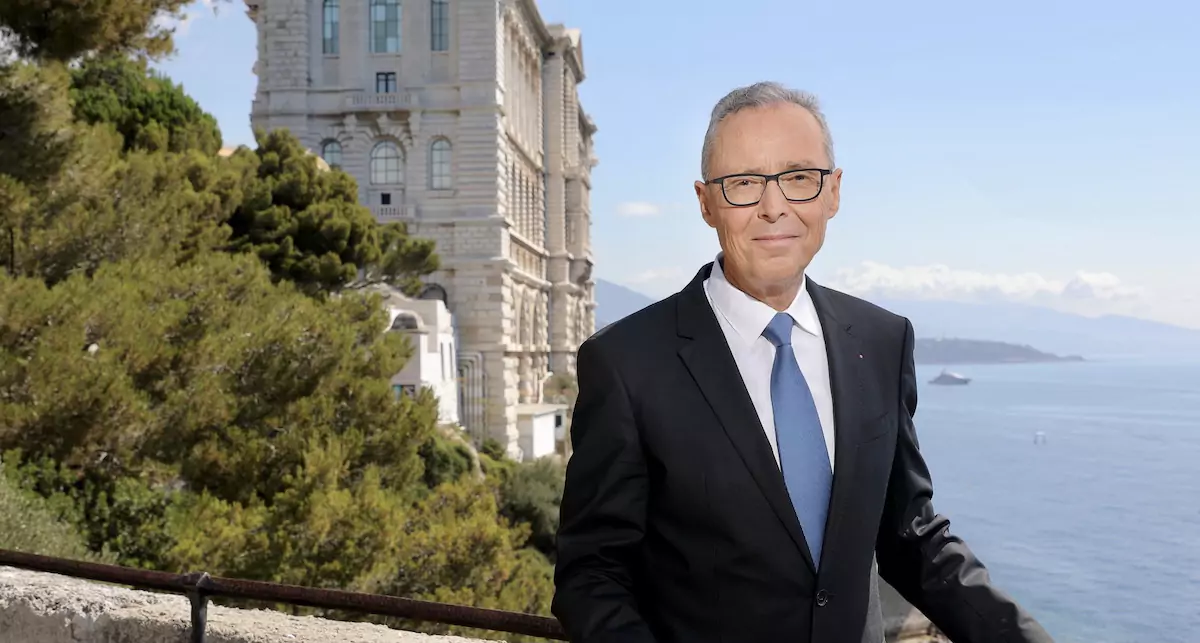In this interview with Monaco Life, Robert Calcagno, CEO of the Oceanographic Institute – Prince Albert I of Monaco Foundation, delves into the essence of Monaco Ocean Week, emphasising Monaco’s strong commitment to ocean conservation, the pivotal role of institutions, and the importance of collaborative action.
As a trusted advisor to Prince Albert II, Robert Calcagno has played pivotal roles in Monaco’s environmental endeavors, transitioning from governmental positions to leadership roles within ocean conservation institutions.
When Prince Albert II assumed the throne in 2005, he invited Robert Calcagno to join his cabinet as a Counsellor and soon after, he named him Minister Of Environment And Urbanism For The Principality. Calcagno remained in that position until 2009, when he became CEO of the Oceanographic Institute – Prince Albert I Foundation in Paris, created in 1906. It was that same year that Prince Albert granted Calcagno Monegasque nationality.
As CEO, Calcagno directs the Oceanographic Museum in Monaco, better known as the Temple of the Sea, inaugurated in 1910, and the Maison de L’Océan in Paris, founded in 1911. His commitment is to support the Sovereign’s action for better knowledge, sustainable management, and protection of the world ocean, which covers 70% of the Earth and, by extension, the ecosystem of our Blue Planet. Over and above that, Calcagno manages the Monaco Explorations Society as a tool to reunify Humanity with the sea.
Robert Calcagno is also a prolific author of several books aimed at raising awareness and knowledge about the oceans in the public. They are titled ‘At the Heart of the Polar Worlds: Challenged by Global Warming And Exploitation’, ‘Corals, a Treasure to Protect’, ‘Sea Turtles – The Great Odyssey’, ‘Jellyfish – Out to Conquer the Ocean’, ‘Sharks – Beyond the Myth’.
In an interview with Monaco Life, Robert Calcagno sheds light on the institutions he leads, the objectives of the current 15th edition of Monaco Ocean Week, and the Monaco Blue Initiative (BMI) launched by Prince Albert II in 2010, which gathers major players in ocean conservation. Most importantly, he emphasises the Principality’s mission to know, love, and protect the Oceans that cover 70% of our ‘Blue Planet’.
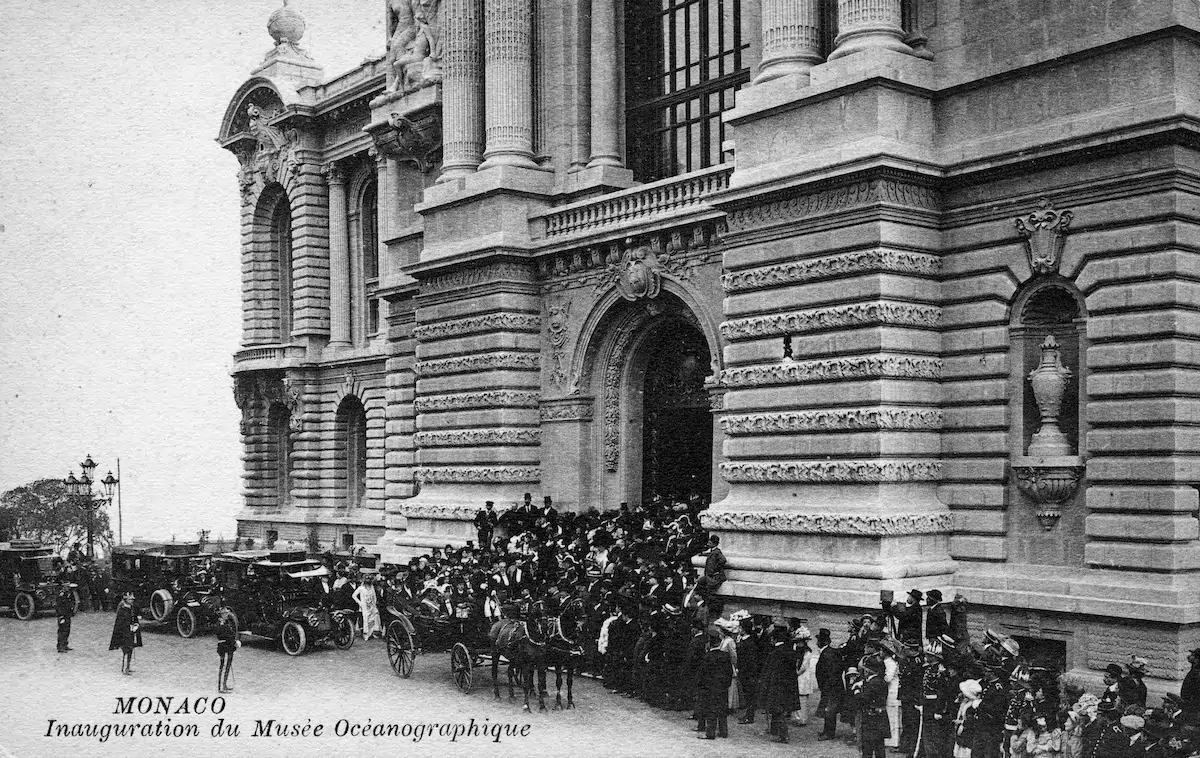
Monaco Life: What is the mission of the Oceanographic Institute?
Robert Calcagno: It goes back to Prince Albert I and his desire to promote broader awareness about the essential role of the Ocean, leading to the creation in 1906 of the Oceanographic Institute – an officially recognised public interest foundation. While that ambition is still very relevant, what is needed now, in the early 21st century, is to add action to knowledge. To that end, the Oceanographic Institute works to build a more sustainable relationship between Humanity and the Ocean by advocating science-based political, social, technological, and economic change. It does so through its two establishments – the Oceanographic Museum in Monaco and the Maison de l’Océan in Paris.
What is the link between the Oceanographic Museum of Monaco and the Maison de l’Océan in Paris? What are their respective goals, and do they complement each other?
The Oceanographic Museum and the Maison de l’Océan were opened in 1910 and 1911, respectively. Both institutions, which regularly work together and complement one another, were the brainchild of Prince Albert I, who wanted to encourage learning and awareness, making science more accessible to the public and persuading Heads of State. One houses collections of artworks and scientific and historical items, such as the magnificent ‘Oceanomania’ cabinet of curiosities, and hosts major exhibitions, like ‘Polar Mission’, which has already been visited by more than a million people. The other occupies a splendid building in the middle of the Latin Quarter, home to some leading ocean conservation stakeholders, while hosting high-level public and professional events focusing on the burning issues of the age.
What is the primary purpose of the Friends of the Oceanographic Museum, created in 2011?
Above all, what unites the Friends of the Museum is their love of the ocean. The association has a growing membership of people from all backgrounds, and they play a vital role in supporting the Museum’s universal Ocean conservation policy and encouraging public awareness initiatives. For example, the association runs a fish sponsorship scheme, with 10% of the proceeds donated to the Oceano for All program. It also organises the Fête du Musée, which emphasises education for ecology, with its 5th edition in September.
Recently, we were honoured with a very generous donation from the association; I will reveal the amount at a press conference on March 26th. This funding will support three major projects: The Oceano for All program targeted at disadvantaged young people, the restoration of old books, and a project to improve fish health.
Oceans cover over 70% of the Earth’s surface, so most life is in fact aquatic. What are the main dangers facing the sea?
Since the Ocean covers 70% of the Earth’s surface, people thought its resources could withstand anything. That was a grave mistake. We are seeing plastic pollution reaching as far as the great ocean trenches, the drive to exploit every drop of fossil fuels, the extinction of species and biodiversity under threat from overfishing, not to mention the disastrous consequences of climate change with the melting of the ice caps, water acidification, and coral dying out. The litany is long.
But giving up is out of the question. The ocean is essential to the health of our planet.
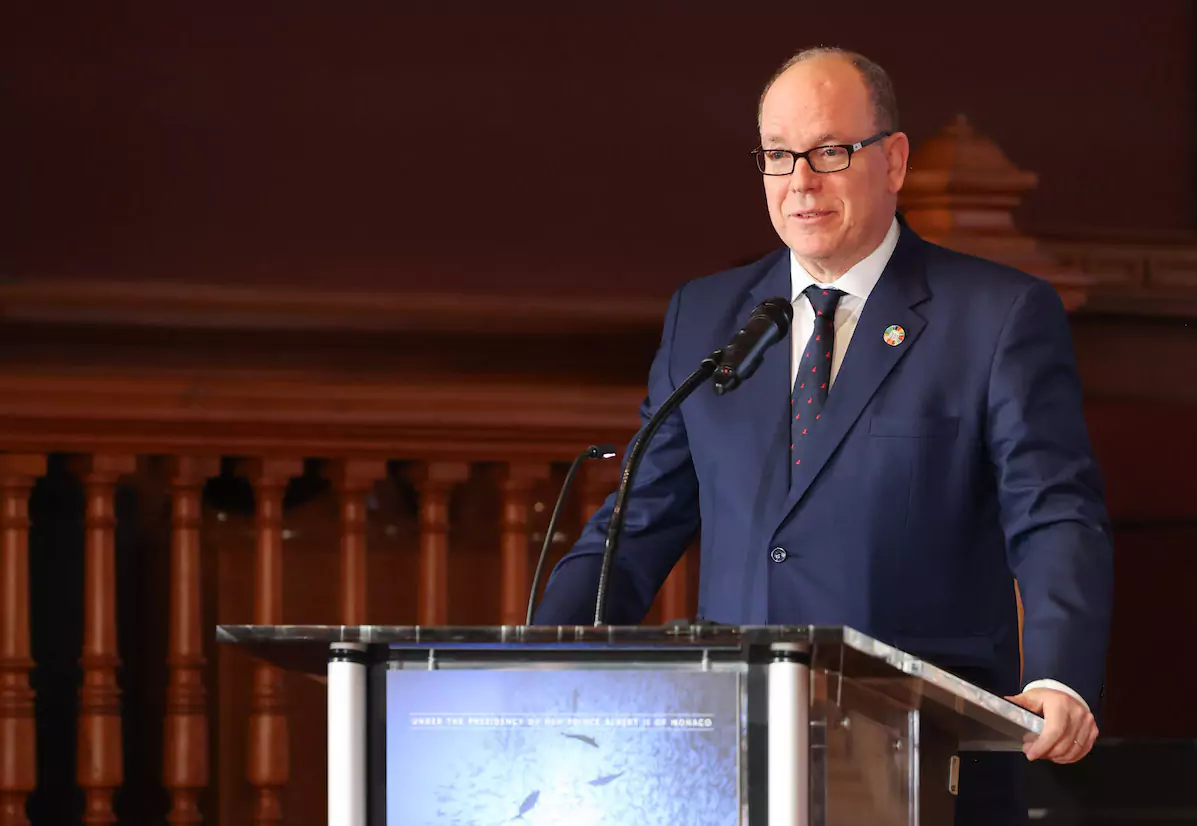
What are the most significant positive actions taken to protect the oceans?
When you tackle issues head-on, it works. I could talk about the fight to protect bluefin tuna in the Mediterranean in the 2000s, a fight that Prince Albert II was the first to bring to the forefront and which has since seen stocks replenished. Or the fight against the use of heavy fuel oil in the Arctic, to which the Sovereign pledged his strong backing.
Today, though, the big ocean project that I want to highlight is the creation of Marine Protected Areas (MPAs), which represents a considerable challenge, especially in the remote polar regions. The Principality of Monaco is fully committed to the highly ambitious objective set by the Kunming-Montreal Global Biodiversity Framework agreed at the COP15 to the UN Convention on Biological Diversity, and its 30×30 target aimed at conserving at least 30 percent of terrestrial and marine areas by 2030.
Let me remind you of the words of Prince Albert II: “The science is completely clear: within 30 years, marine protected areas must cover 30% of the surface of the oceans. And that’s a minimum, not a maximum, because the most recent research suggests that, to conserve biodiversity, food supplies, and ocean carbon storage, we must protect about 45% of the ocean.”
That’s why the Oceanographic Institute supports plans for three new Marine Protected Areas in the Southern Ocean, which would represent a significant step towards achieving the 30×30 target. We recently made an active contribution to that commitment by organising an expedition to the South Pole and the Danger Islands to the northeast of the peninsula to collect scientific data to enable the creation of an Antarctic Specially Protected Area (ASPA) in the region.
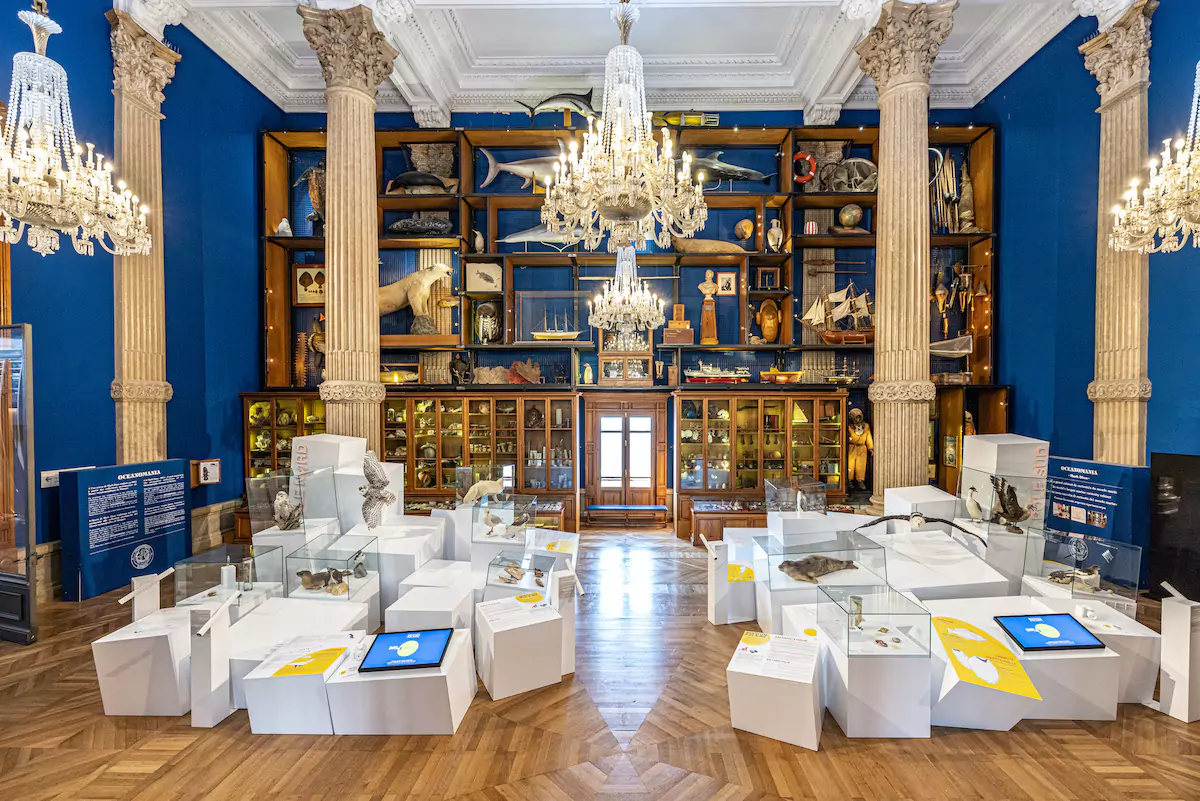
Less than 5% of the oceans have been explored despite modern technologies. As the Chief Executive of Les Explorations de Monaco, what are the organization’s ambitions?
Les Explorations de Monaco is a platform for Prince Albert II of Monaco’s commitment to knowledge, sustainable management, and ocean protection. Les Explorations de Monaco is, first and foremost, a conduit for sharing. Our ambition is not to make science an end but rather to combine science and communication. One of our strengths is our ability to rely on the leadership of a committed Head of State.
HSH Prince Albert II is known worldwide, and when he speaks, people listen. He can interact with the highest authorities, engage in open dialogue with governmental bodies, and rally leaders behind him. The Monaco Explorations was launched in 2017 and has built its approach on three priorities: a political commitment to intelligent, sustainable management of natural environments adopted at the very highest level; high-quality scientific research to acquire knowledge that can help us make the right decisions; and a policy of educating the public and particularly younger generations, to inform, engage, and encourage them to play their part.
Can you tell us about the present and future exploration missions?
Since its creation, The Monaco Explorations has carried out 19 missions. The most recent, the biggest ever undertaken by the Principality, occurred in the Indian Ocean between Réunion, the Seychelles, and Mauritius. On the scientific side, it aimed to explore Saya de Malha, a shallow bank described as an “invisible island”, to assess the biodiversity. A thousand species were identified, including several potentially new species.
Regarding mediation with the public, we hosted over 500 visitors during calls at ports, creating awareness about conservation issues. They included around 20 groups of schoolchildren.
Finally, from a diplomatic perspective, it was an opportunity for the Sovereign Prince to visit the Seychelles, where he held talks with local political leaders.
From 2024 until 2030, Les Explorations de Monaco will set a course for the Mediterranean and the Black Sea. We will be working to put science into practice. Our role will be to act as the conduit between various initiatives in Monaco and the 22 countries around the Mediterranean, working with governments, collaborating with stakeholders on the ground and supporting their initiatives, providing scientific input, and trying to persuade. The significant challenges once again include the 30×30 target I mentioned earlier.
This mission will complete the Oceanographic Institute’s major program devoted to specific themes. After several years of focusing on coral reefs and the polar regions, we will dedicate our efforts to the Mediterranean Sea starting next year.

Which concrete actions would help reunify Humanity with the sea?
Today, we need to change our mindset and prioritise new economic models for more sustainable travel, consumption, and use of resources. “The blue economy and the circular economy are not pipe dreams,” Prince Albert II stresses in His book (L’Homme et l’Océan / The Ocean and Us, published by Flammarion). He also states an essential truth: “We must invent solutions, and we must completely rethink our relationship with the sea”.
For our societies, that means changing our philosophy by returning to the prevailing school of thought of the 17th century, which saw the ocean as a common good for Humanity.
How does the Oceanographic Institute closely collaborate with the Government of Monaco, the Prince Albert II of Monaco Foundation, the Scientific Centre of Monaco, and the Yacht Club of Monaco for a coherent action to protect our ecosystem?
The Principality of Monaco is a small country, but paradoxically, that gives it much greater latitude to adopt a different tone. Prince Albert II’s legitimacy in protecting the ocean is apparent. “I had no right to stand by and do nothing. I had, and always will have, a duty to act,” he explains. He can rely on the Prince’s Government and the different Monegasque institutions you mention, including the Oceanographic Institute. We can make our voices heard internationally if we all consolidate our efforts. In a way, it’s one whole ecosystem devoted to conserving another, the one you are talking about, namely the marine ecosystem. And Monaco Ocean Week is a perfect example of that collaboration.
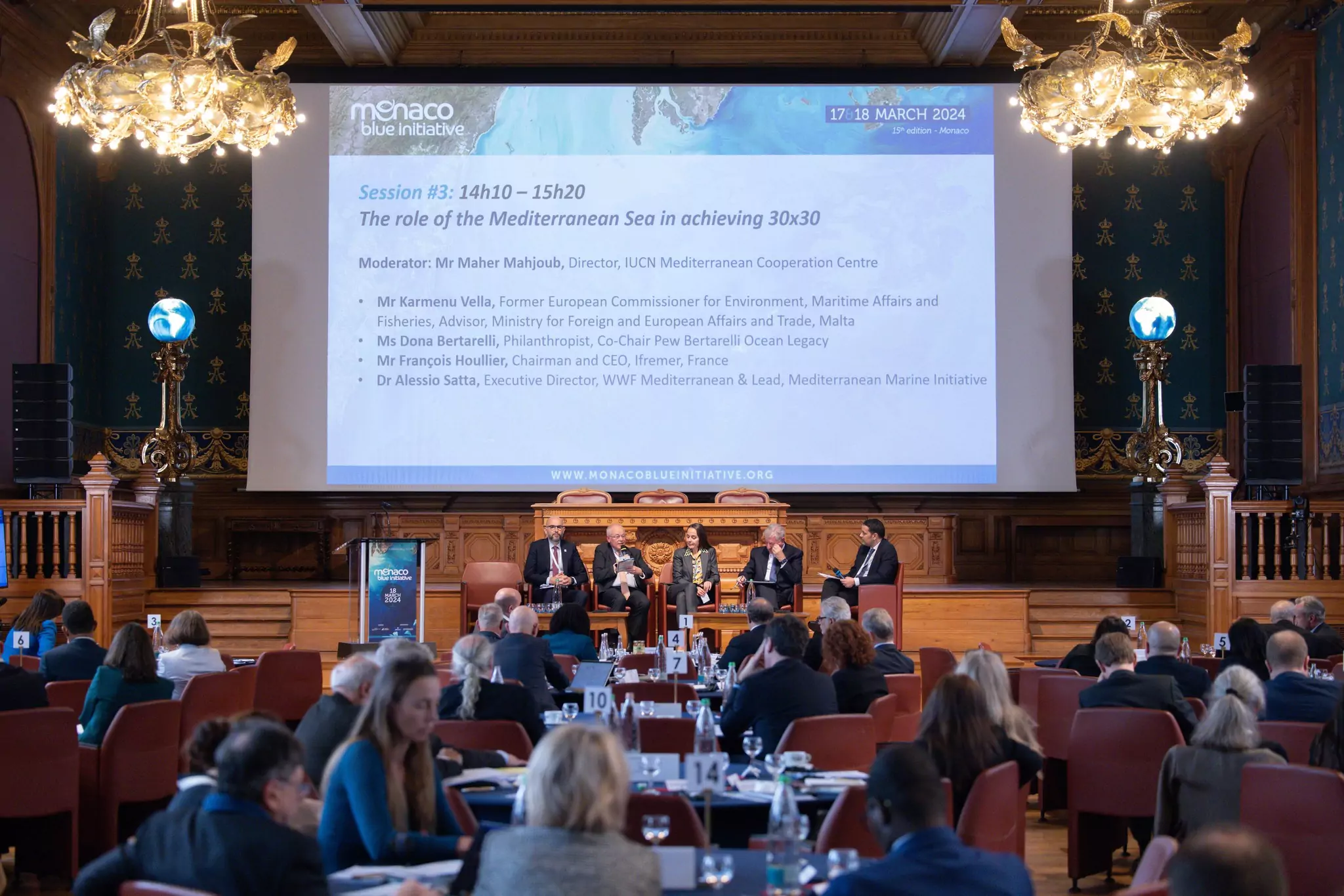
This year is the 15th edition of Monaco Ocean Week, which is currently taking place; What are the primary purposes of this annual gathering of experts?
The creation of Monaco Ocean Week responded to an obvious truth: key marine stakeholders must share their takes on significant marine conservation issues and take action to conserve the ocean. It’s about science, economics, and law, not to mention several events aimed at young people, our future ambassadors.
The Monaco Blue Initiative is the cornerstone, now in its 15th year. It promises to be a hectic and productive day. It will kick off with a look at the advances made in the last 15 years regarding major international agreements, marine protected areas, and so on. Most importantly, we will set a course for the next 10 years to tackle emerging challenges like protecting the Southern Ocean or addressing deep sea mining.
That sequence will be followed by another – equally important – on the Blue Economy and the role of the private sector. While it’s crucial to work with the scientific community and civil society, we also urgently need to bring economic actors and the world of finance to the table and show them that their initiatives are not just compatible with their growth targets but can be a source of growth themselves, and sustainable growth too.
Finally, a third session will examine the role and place the Mediterranean needs to occupy regarding the 30×30 target.
Building assessments, ambitions, and the right strategies to achieve them are MBI’s goals.
What is your outlook on the future? Do you have any final thoughts?
I will never be a member of a ‘team defeatist’. Many, many people today understand the issues. There is a growing realisation in civil society, the business community, and politics. That realisation can and must enable us to radically rethink our relationship with the sea, especially as it’s not about wrapping the ocean in cotton wool but instead striking a balance between environmental conservation and sustainable economic activity. I have faith in Humanity.
To join the Friends of the Museum of Monaco, visit: https://www.amisdumom.com/adhesion/
SEE ALSO:
Join the Monaco Life community – sign up for the Monaco Life newsletter, and follow us on Threads, Facebook, Instagram, LinkedIn and Tik Tok.
Main photo of Robert Calcagno with the Oceanographic Museum of Monaco in the background ©T. Amelier, Institut Oceanographique
